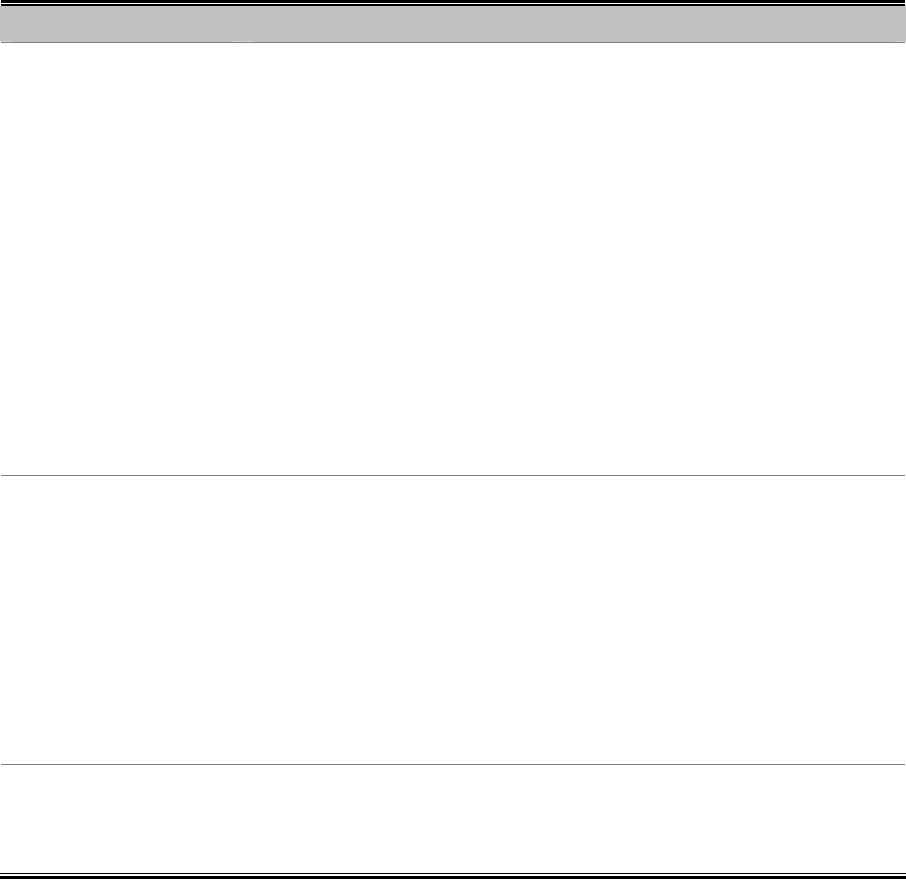Manual
Table Of Contents
- 1. INTRODUTION
- 2. INSTALLATION
- 3. SWITCH MANAGEMENT
- 4. WEB CONFIGURATION
- 4.1 Main WEB PAGE
- 4.2 System
- 4.3 Simple Network Management Protocol
- 4.4 Port Management
- 4.5 Link Aggregation
- 4.6 VLAN
- 4.7 Rapid Spanning Tree Protocol
- 4.8 Quality of Service
- 4.9 Multicast
- 4.10 IEEE 802.1X Network Access Control
- 4.10.1 Understanding IEEE 802.1X Port-Based Authentication
- 4.10.2 802.1X System Configuration
- 4.10.3 802.1X and MAC-Based Authentication Port Configuration
- 4.10.4 802.1X Port Status
- 4.10.5 802.1X and MAC-Based Authentication Statistics
- 4.10.6 Windows Platform RADIUS Server Configuration
- 4.10.7 802.1X Client Configuration
- 4.11 Access Control Lists
- 4.12 Address Table
- 4.13 Port Security (To be Continued)
- 4.14 LLDP
- 4.15 Network Diagnastics
- 4.16 Stacking – SGSW-24040 / SGSW-24040R
- 4.17 Power over Ethernet (SGSW-24040P / SGSW-24040P4)
- 5. COMMAND LINE INTERFACE
- 6. Command Line Mode
- 6.1 System Command
- 6.2 Port Management Command
- 6.3 Link Aggregation Command
- 6.4 VLAN Configuration Command
- 6.5 Spanning Tree Protocol Command
- 6.6 Multicast Configuration Command
- 6.7 Quality of Service Command
- 6.8 802.1x Port Access Control Command
- 6.9 Access Control List Command
- 6.10 MAC Address Table Command
- 6.11 LLDP Command
- 6.12 Stack Management Command
- 6.13 Power over Ethernet Command
- 7. SWITCH OPERATION
- 8. POWER OVER ETHERNET OVERVIEW
- 9. TROUBLE SHOOTING
- APPENDEX A
- APPENDEX B : GLOSSARY

User’s Manual of WGSW-24040 Series
SGSW-24040/24240 Series
124
The page includes the following fields:
Object Description
• QCE Type
Select the available type for the specific QCE.
• Ethernet Type: Matches the received frame's EtherType against the QCE
Key.
• VLAN ID: Matches the frame's VID against the QCE Key.
• TCP/UDP Port: Matches the destination port and the source port against
the QCE Key.
• DSCP: Matches the received IPv4/IPv6 DSCP value (6 bits) against the two
DSCP values in the QCE Key.
• ToS: Uses the precedence part of the IPv4/IPv6 ToS (3 bits) as an index to
the eight QoS Class values in the QCE Key.
• Tag Priority: Uses the User Priority value (3 bits) as an index to the eight
QoS Class values in the QCE Key.
• Type Value
Configure the values according to the QCE type you select.
• Ethernet Type: The allowed values for this type range from 0x600 (1536) to
0xFFFF (65535).
• VLAN ID: The allowed values for this type range from 1 to 4095.
• TCP/UDP Port Range: Specify whether there is a range or a specific port
number. The port range allowed is from 0 to 65535.
• DSCP: The allowed range is 0 to 63. ToS or Tag Priority do not have type
value settings.
• Traffic Class
Select a traffic class of Low, Normal, Medium, or High to apply to the QCE.
If the QCE type is ToS or Tag Priority, there are 8 rows of traffic class that can be
configured for each priority.
4.8.3 Port QoS Configuration
This page allows you to configure QoS settings for each port.
• Frames can be classified by 4 different QoS classes: Low, Normal, Medium, and High.
• The classification is controlled by a QCL that is assigned to each port.
• A QCL consists of an ordered list of up to 12 QCEs.
• Each QCE can be used to classify certain frames to a specific QoS class.
• This classification can be based on parameters such as VLAN ID, UDP/TCP port, IPv4/IPv6 DSCP or Tag Priority.
• Frames not matching any of the QCEs are classified to the default QoS class for the port.
• The settings relate to the currently selected stack unit, as reflected by the page header.
The Port QoS Configuration screen in Figure 4-8-3 appears.










